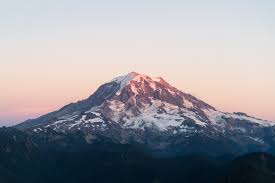
Breaking News
 Shadowy Forces Behind JD Vance's Rise and Grooming as MAGA Successor
Shadowy Forces Behind JD Vance's Rise and Grooming as MAGA Successor
 Who Is Paying Alberta, Canada, Premier Danielle Smith if Not Big Pharma?
Who Is Paying Alberta, Canada, Premier Danielle Smith if Not Big Pharma?
 RFK Jr. kills off $122M in grants to LGBT and diversity causes in sweeping action
RFK Jr. kills off $122M in grants to LGBT and diversity causes in sweeping action
 Trump Unveils Another $825M Arms Sale To Ukraine, While Talking Peace
Trump Unveils Another $825M Arms Sale To Ukraine, While Talking Peace
Top Tech News
 NVIDIA just announced the T5000 robot brain microprocessor that can power TERMINATORS
NVIDIA just announced the T5000 robot brain microprocessor that can power TERMINATORS
 Two-story family home was 3D-printed in just 18 hours
Two-story family home was 3D-printed in just 18 hours
 This Hypersonic Space Plane Will Fly From London to N.Y.C. in an Hour
This Hypersonic Space Plane Will Fly From London to N.Y.C. in an Hour
 Magnetic Fields Reshape the Movement of Sound Waves in a Stunning Discovery
Magnetic Fields Reshape the Movement of Sound Waves in a Stunning Discovery
 There are studies that have shown that there is a peptide that can completely regenerate nerves
There are studies that have shown that there is a peptide that can completely regenerate nerves
 Swedish startup unveils Starlink alternative - that Musk can't switch off
Swedish startup unveils Starlink alternative - that Musk can't switch off
 Video Games At 30,000 Feet? Starlink's Airline Rollout Is Making It Reality
Video Games At 30,000 Feet? Starlink's Airline Rollout Is Making It Reality
 Automating Pregnancy through Robot Surrogates
Automating Pregnancy through Robot Surrogates
 Grok 4 Vending Machine Win, Stealth Grok 4 coding Leading to Possible AGI with Grok 5
Grok 4 Vending Machine Win, Stealth Grok 4 coding Leading to Possible AGI with Grok 5
"Most Significant Seismicity Since 2009": Quake Swarm Detected At Washington's Mt. Rai

While this marks the most significant seismic activity at the volcano since 2009, the USGS emphasized that there is no immediate cause for concern and the alert level remains at "Green/Normal."
The quake swarm of hundreds of very small earthquakes was recorded beneath Mount Rainier around 0130 local time on Tuesday. The largest quake so far was magnitude 1.6, occurring at a depth of 1–4 miles (2–6 km) below the summit.
Mount Rainier typically experiences about nine quakes per month, with swarms like this happening 1–2 times per year, though usually with fewer events. However, the USGS stated that this earthquake swarm was "the most significant seismicity at the volcano since 2009."
The alert level remains GREEN / NORMAL, and monitoring continues via the Pacific Northwest Seismic Network...
"Right now, this swarm is still within what we consider normal background levels of activity at Mount Rainier. Past swarms have been attributed to the circulation of fluids interacting with preexisting faults," USGS said.
Here's more color on what quake swarms may indicate:
Movement of magma or fluids: These swarms are often caused by magma rising, or hot fluids circulating underground, putting pressure on surrounding rocks and causing them to crack.
Stress along faults: Sometimes swarms occur along faults or fractures, where stress builds up and is released in small bursts.
Volcanic unrest (sometimes): While not always dangerous, swarms can be an early sign of volcanic unrest, especially if accompanied by other changes like ground deformation, gas emissions, or thermal anomalies.
All indications from the USGS suggest that this swarm event is "normal." Certainly something for residents in the Pacific Northwest to keep an eye on.

 HERE COMES THE MOTHERSHIP
HERE COMES THE MOTHERSHIP

